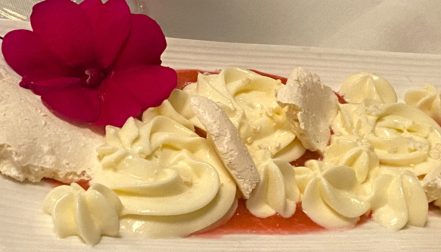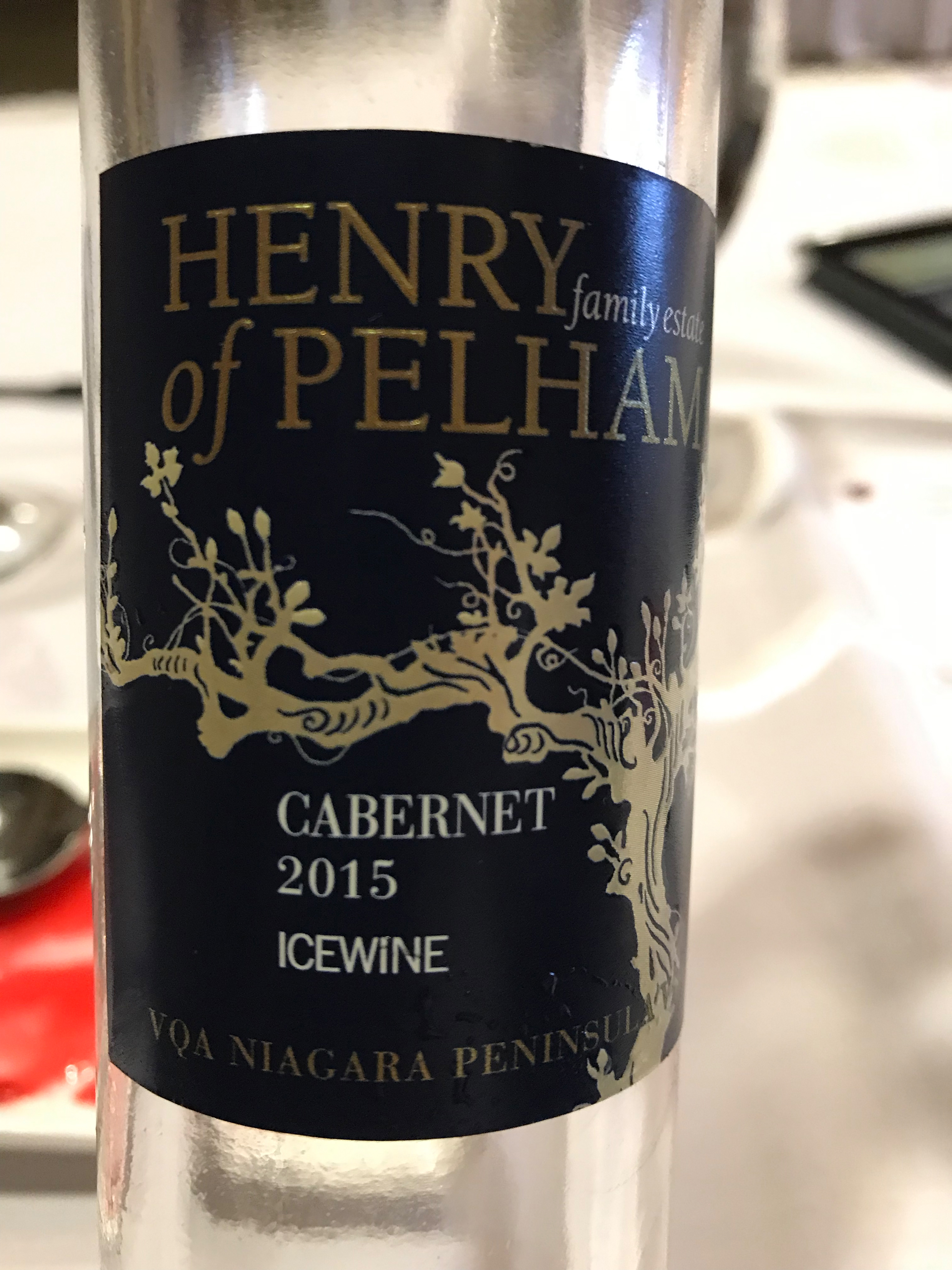Sorry for the delay in posting on this event. Perhaps the timing is good! Several of these wines, e.g. the riesling and the Gewurtztraminer, go well with turkey.
Farewell to Nick
This was Nick’s last wine and dine as a RiverBend staffer. We gathered for the occasion, sipping on sparkling wine – Henkell Trocken.
As most of us know, Nick joined RiverBend about the same time we launched this website.
We celebrated his WSET achievements (Level One and Advanced) and joined him on virtual wine and dine journeys to California, South America, France, Italy and Australia.
All the best to Nick on the next stages of his career (can’t believe it has been almost three months) – hope we can entice him to host a wine event in 2020.
Apologies to Nick – we didn’t take any pictures of him on this occasion so I have included some earlier shots that reflect his contribution to RiverBend.
Welcome from Chanel
Chanel provided an overview of what was to come in the evening. The dishes follow an Eastern European theme (Kirk’s menu reflecting his family’s Austrian roots). Nick also commented on the treat of home style cooking.
1st Course
Seared Lamb and Cabbage Soup
Traditionally just cabbage soup in Russia. Paired with Irish seeded soda bread. No proofing time – mix and bake. Added a little cinnamon to the soup. Simmered for 4-5 hours. Lamb was melt in your mouth.
Paired with Pinot Gris from Pierre Sparr 2017 (Alsace). Very Germanic. A French version of Pinot Grigio. Very dry. Grapes left on the vine longer and the skins get a pink tone. Pear, nectarine, stone fruit. Rich, slightly sweet tone. Macerated with skins. Sweetness level is not listed on the label. Higher the alcohol percentage the dryer the wine (12.5% for this wine). In Alsace the label, Gran Reserve, is used if a better parcel of grapes. These wines are usually intended to be drunk young and fresh. Unusual to have a white wine match with a dish this rich. West coast pinot gris not as rich, terroir coming through.
2nd Course
House Made Pork Sausage Rolls
No certain origin – maybe France, pastry recipe from Hungary. Ground pork seasoned with salt, pepper, roasted garlic, thyme, oregano. Wrapped in puff pastry. Paired with Pommery mustard.
Paired with Darting Riesling Kabinett, Durkheimer Hochbenn Pfalz 2014. German wine, Kabinett style. Really good cellaring and aging potential. Grow on slopes so steep that all grapes are handpicked. Some sweetness but high acidity. Great food wine because of the acidity level. Salty and sweet also works well. Riesling also works with spicy chicken wings. Also great pairing with turkey.
River systems – main river through the wine region is the Rhine, other regions are the Ahr river and the Mosel river (steep slopes). The water reflects the sun, moderates the temperature. The cooler the region, the higher the acidity. The grapes are less ripe than hotter regions where there will be more sugar. Less sugar to ferment with means a lower alcohol level.
Some of the oldest wines are rieslings – still drinkable because of the acidity. Odd, Germans are fans of mould that collects on the bottles in the cellar.
3rd Course
Classic Chicken Paprikash
Chicken cooked with paprika – combination of smoked and regular paprika. Chicken broth, onions, tomatoes. Simmered for about 8 hours. Paired it with a spaetzle. Seasoned with salt, pepper, nutmeg.
Paired with Gewurtztraminer. Spicy grape. Does have a little bit of pink colour to the skins. Pairs well with spicy dishes – flavourful rather than hot. This wine is from Germany. Waterloo has a destination store for the LCBO for German wines. From Pfalz as well – Villa Wolf 2017. Touch of sweetness in this wine to go with the paprika. Lower alcohol – 11.5%. There is a greenish tinge to the wine. Also a good wine for turkey!!
4th Course
Steamed Dumpling with Smoked Bacon and Forest Mushroom Compote
Very rich – steamed dumpling, yeast dough that rises briefly and is then steamed – paired with mushroom compote – shiitake mushrooms, oyster mushrooms, bacon, pork fat, onions, coriander, garlic – garnished with a little parsley.
Chef Kirk says this dish is something he grew up with.
German red paired with this dish. Pinot Noir but the German name is Spätburgunder – late ripening Burgundy grape. Also acquired at the LCBO in Waterloo. Comes from Baden, the most southern region in Germany and the warmest. The river Nectar influences the vineyards, warming during the night. Age this pinot in giant vats so minimizes oak influence. Tannin from the skins that makes this a bigger bodied wine. Also Weissburgunder – white – and Grauburgunder – pinot gris. Labelling system called the VDP, a privately owned board that rates the wines from the regions, is displayed on the bottle. Another term is Grosses Gewächs which relates to the dryness.
5th Course
Braised Brisket and Blue Cheese Pierogi
“Sometimes things in the kitchen just don’t go the way you were hoping for.” The pierogi effort failed. Chanel offered potato pancake, latke, instead of the pierogi. Everyone has potatoes in the pantry! Paired with creme fraiche.
The red wine is from California, not Germany. New world wines have good ripeness and the fruit characteristic really stands out. Blue cheese is very difficult to pair wines with – sweet wine a natural. This wine is a Robert Mondavi Bordeaux style blend – Cabernet Sauvignon, merlot, Malbec, Cabernet Franc, Petit Verdot. Skins remain with the juice on this wine for 2 1/2 days. It is aged in French oak. Maestro series 2014 – $67. The wine was poured out of a decanter – still a little tight so aeration helped. Decanted about 3 hours before pouring. This wine is technically a “meritage” which is an American term for the Bordeaux blend. It is an expression of winemaker’s skill at blending proportions of these varietals in order to deliver a consistent wine year after year. In France the proportions are regulated so year on year there are may be significant vintage variations.
Nick expounded on decanting – one reason to decant is for a young, robust red wine is that really needs more time in the bottle and the time aerating helps bring out the fruit – decanting an old wine is usually only to remove the sediment and the wine is poured immediately.
6th Course
Plum Pie Soaked with Vanilla Custard
Dessert is Chanel’s favourite. Pizza dough recipe, sweetened, with ripe plums, raw sugar and West5 honey. Vanilla custard – butter, vanilla, sugar, brandy. Chanel gave kudos to her team who were swamped in the kitchen with a full roster.
Aszu is a berry affected by “noble rot”, botrytis. The region in Hungary is quite humid, the moisture sticks to the grape and the fungus attaches. depleting the grape of water thereby increasing the density of the sugar. Harvest is very time consuming – picking for about a week to get the berries as they are ready. Have a base wine, 10% alcohol and already fermented. Add the berries into this wine and another fermentation takes place. A little more alcohol and more sweetness. The wine is aged in an oak cast which is unusual for a sweet wine. Really good stone fruit, honey – comes from the fungus.
Aside – Muscatali – Tokaj Eszencia – press the “rot” grapes into a paste. 454 grams of sugar per litre by law. Takes three years to complete the fermentation process. Mere $290 a 350 ml bottle.
Trivia ( I think these are the right answers – corrections accepted. I didn’t get them all.😒)
Type of wine not grown in Alsace – Chardonnay
Is it appropriate to send back a bottle just because you don’t like it? – NO
Which German wine is the sweetest? – Trockbeerenauslese
What does the German word trocken mean? – Dry
Pairing a wine with spicy Chinese or Thai dinner – Gewurtztraminer
What does the term reserve mean for a U.S. wine? – Nothing
Chaptalization is adding to wine to balance its taste – False































































